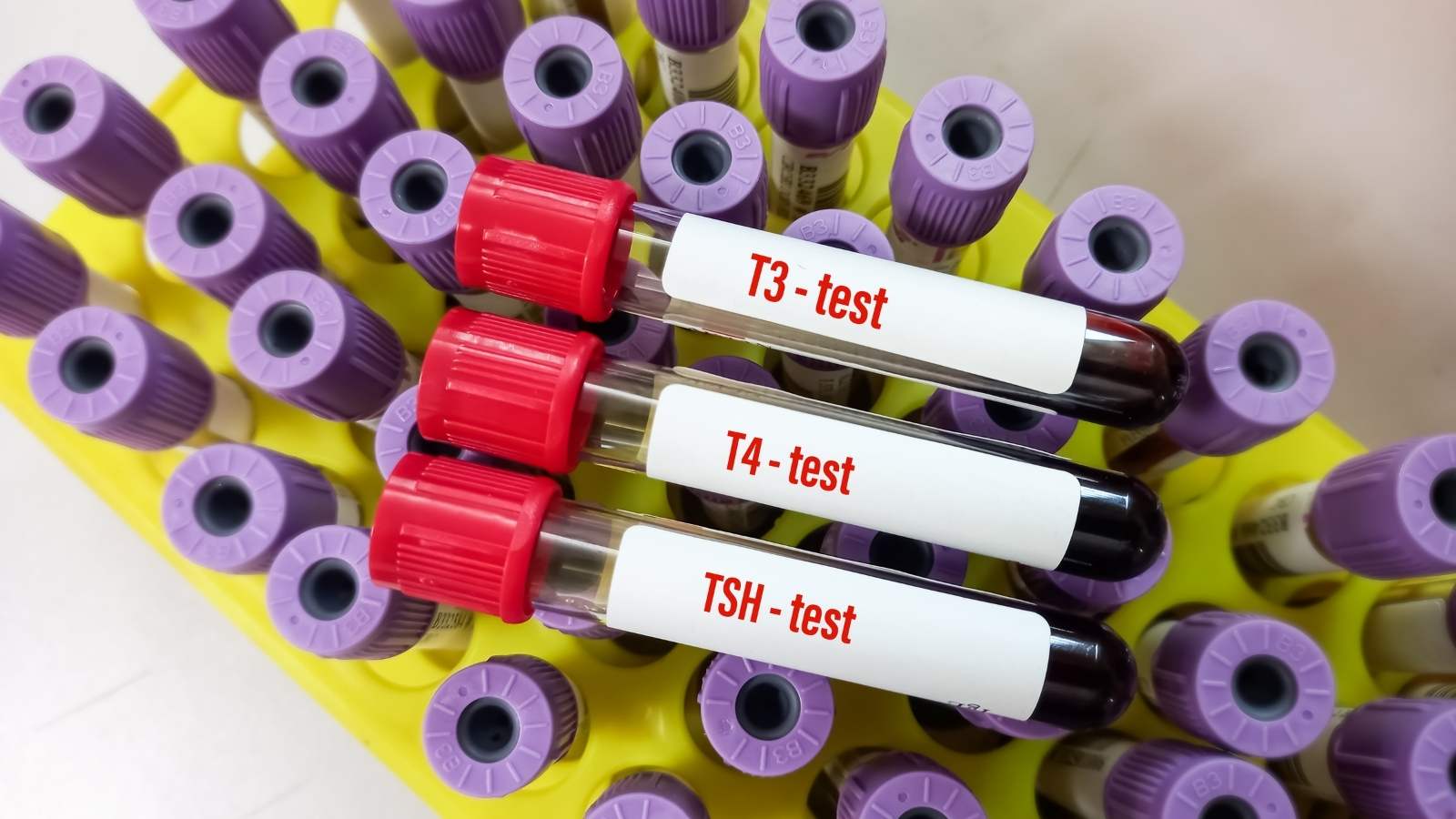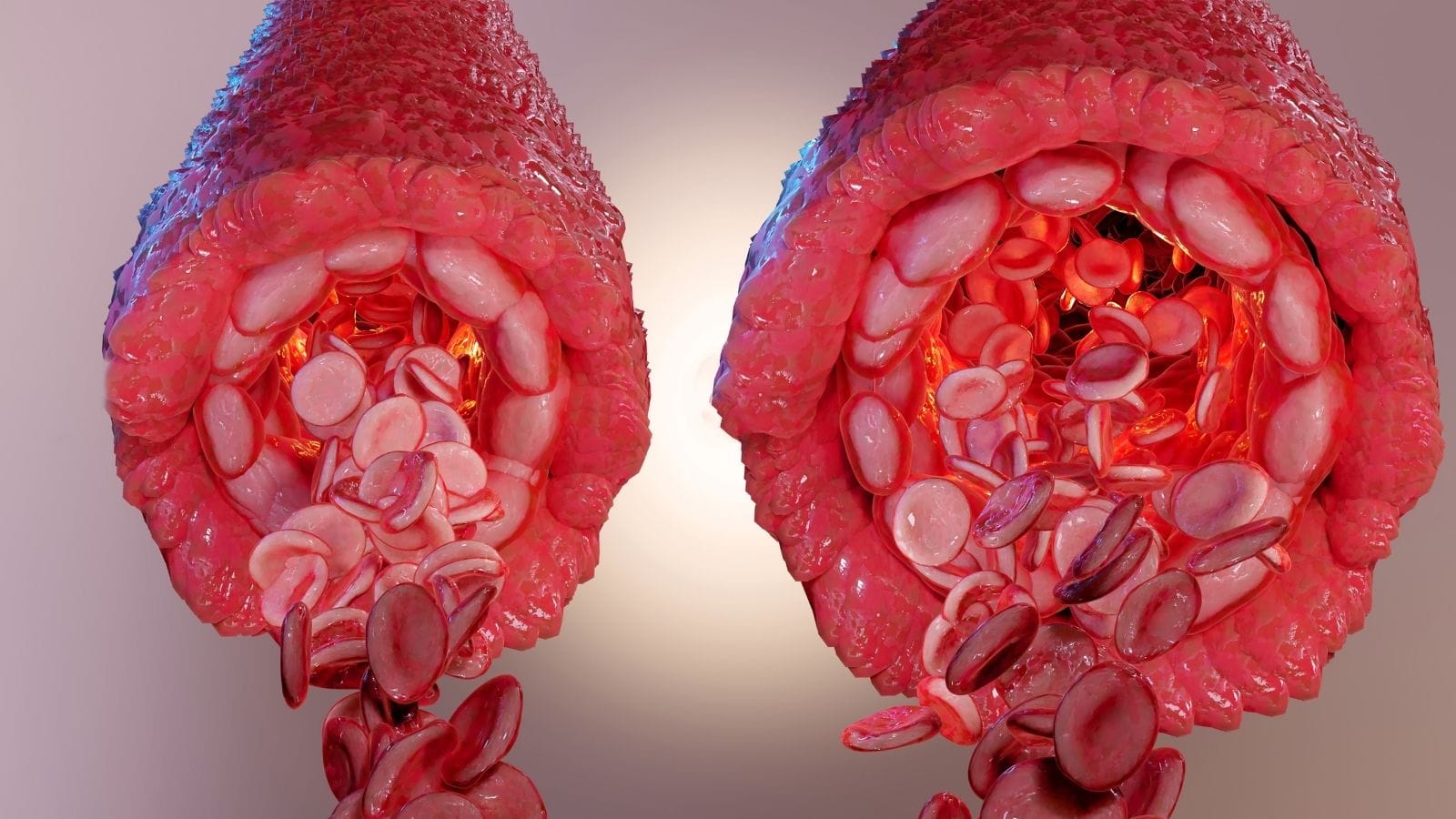Magnetic resonance imaging (MRI) is a diagnostic method that uses strong magnetic fields and radio waves to create detailed images of internal organs and tissues. It is non-invasive and widely applied in modern medicine.
MRI is commonly used to evaluate the brain, spinal cord, joints, and abdominal organs. It provides high-resolution images, helping detect tumors, vascular diseases, injuries, and degenerative conditions.
Unlike CT, MRI does not use ionizing radiation, making it safer for repeated imaging. Contrast agents may be administered in some cases to enhance visualization of blood vessels and pathological changes.
Indications for MRI include neurological symptoms, musculoskeletal disorders, cardiovascular diseases, and cancer staging. Its versatility and precision make it an essential tool for accurate diagnosis and treatment planning.
| Abbreviation | Magnetic Resonance Imaging (MRI) |
| Basic Principle | Detailed visualization of internal body structures using a strong magnetic field and radio waves |
| Areas of Use | Brain, spinal cord, musculoskeletal system, liver, heart, blood vessels, soft tissues |
| Advantages | No radiation exposure, high-resolution images of soft tissues |
| Disadvantages | Long duration, discomfort for claustrophobic patients, incompatibility with some metal implants |
| Examination Duration | Varies between 15–60 minutes |
| Preparation Requirements | Removal of metal objects; fasting may be required in some cases |
| Contraindications | Pacemaker, certain metal implants, internal devices containing magnetic parts |
| Side Effects | Rare; allergic reactions may occur when contrast agent is used |
| Contrast Agent Usage | Gadolinium-based; administered intravenously in some cases, used to differentiate tumors, infections, or inflammation |
What Exactly Is MRI?
MRI stands for Magnetic Resonance Imaging. It is an advanced technology that, with the help of a powerful magnet, radio waves, and a computer, enables us to see the inside of our body—especially organs, muscles, the brain, and other soft tissues—in incredible detail. No instruments are inserted into the body, and there is no incision. It is a completely non-invasive method. This can sometimes be an alternative to surgeries or biopsies that may be needed for diagnosis. In short, it is a way to see inside your body without causing any harm.
How Is MRI Different From Other Methods?
The most striking difference of MRI is that it does not use radiation. While X-ray and Computed Tomography (CT) use X-rays, MRI works entirely with magnetic fields and radio waves. This makes it a much safer option, especially for cases requiring repeated imaging, children, or pregnant women (when necessary). Obtaining detailed images without radiation risk is one of MRI’s biggest advantages. That’s why it is often preferred in the follow-up of diseases like MS or post-cancer treatment monitoring.
Which Tissues Are Best Visualized by MRI?
MRI is unrivaled in visualizing soft tissues. The brain, spinal cord, nerves, muscles, ligaments and menisci in joints, liver, and kidneys can be examined very clearly with MRI. Its ability to distinguish normal from diseased tissue is very high. It can also show bones, but CT is usually superior for bone details. MRI’s strength is in revealing fine details in soft tissues. Therefore, MRI is requested when other methods are insufficient or when a soft tissue problem is suspected.
What Is the Function of the Powerful Magnet in the MRI Scanner?
The basis of the MRI scanner is a giant magnet. This magnet aligns the tiny particles called protons, which are normally scattered within the water molecules in our body, in one direction—like compass needles aligning with Earth’s magnetic field. Since most of our body is made up of water, there are plenty of protons to align. The first step in MRI is aligning these protons using magnetic force.
Why Are Radio Waves Used During MRI?
After the protons are aligned in the magnetic field, the scanner sends short bursts of radio waves. These waves increase the energy of the aligned protons and temporarily disrupt their alignment—essentially knocking them out of place. When the radio wave stops, the protons begin to return to their original alignment. During this process, they release the extra energy as radio waves, which are picked up by the MRI scanner’s sensitive receivers.
How Are MRI Images Produced?
Protons in different tissues (fat, water, muscle, blood, or diseased tissue) return to their original alignment at different rates and emit signals of varying strength after the radio wave pulse. These differences form the basis of MRI. The scanner collects these varying signals, and a powerful computer processes them, analyzing where and with what strength the signals originate. It creates a detailed, sectional or three-dimensional map of that area of the body, which appears as the black-and-white MRI images we see on the screen.
What Causes the Noises During MRI Scanning?
The rhythmic, loud knocking or clicking noises heard during MRI scanning can be alarming for some people but are completely normal and part of the imaging process. The sounds are caused by additional magnets called “gradient coils.” These coils rapidly create brief changes in the main magnetic field, helping to pinpoint where signals are coming from within the body. Their rapid on-off movements produce the noises, indicating that the scanner is working and capturing detailed images.
When Is Contrast Agent Needed in MRI?
In some situations, a contrast agent is used to make differences between tissues more apparent or to visualize certain structures—such as blood vessels, inflamed areas, or tumors—more clearly. This agent usually contains gadolinium and is injected intravenously. The contrast agent changes how protons in the tissues send signals, making abnormal or highly vascularized areas appear brighter on the images. The need for a contrast agent depends on the clinical problem and is decided by the doctor.
Why Is MRI Indispensable for the Brain and Spinal Cord?
MRI is essential for imaging the brain and spinal cord. It is used to diagnose brain tumors, stroke, MS (Multiple Sclerosis) plaques, aneurysms, lumbar and cervical hernias, spinal cord injuries, and nerve compressions. It is also used to investigate unexplained headaches, dizziness, or seizures. MRI provides extremely detailed images of the nervous system structures and is also useful for investigating problems with the eyes and inner ears.
Why Is MRI Performed for Joint Problems?
MRI is the gold standard for diagnosing joint issues in the knee, shoulder, hip, or ankle. Meniscus tears, ligament injuries, tendon ruptures, and cartilage damage—especially common in sports injuries—are clearly visualized with MRI. MRI also detects joint inflammation (arthritis), fluid accumulation, bone marrow edema, stress fractures, early avascular necrosis, and soft tissue tumors around the joint. MRI can reveal many soft tissue problems that X-rays cannot show.
Why Is MRI Important for the Abdomen and Pelvis?
MRI can be used for a detailed evaluation of intra-abdominal organs such as the liver, gallbladder, bile ducts, pancreas, kidneys, spleen, and adrenal glands. It helps diagnose liver fat accumulation, cirrhosis, tumors, bile duct stones or strictures, pancreatitis or tumors. It also plays an important role in diagnosing diseases of pelvic organs such as the uterus, ovaries, and prostate. MRI is valuable in assessing the extent and activity of inflammatory bowel diseases (Crohn’s, ulcerative colitis). In suspected appendicitis—especially in children and pregnant women—it is preferred as a radiation-free alternative.
How Is MRI Used for the Heart and Blood Vessels?
Special cardiac MRI scans evaluate heart structure, chamber size, wall thickness, and contractility in great detail. Cardiac MRI helps assess heart muscle damage after a heart attack, cardiomyopathies, and congenital heart diseases. MRI angiography (MRA) is used to visualize arteries and veins, identifying narrowing, blockages, aneurysms, or dissections in the brain, neck, kidneys, or legs.
What Is the Role of MRI in Breast Health?
Mammography is the main screening method for breast cancer, but breast MRI is used in special cases. MRI is especially useful for women with dense breast tissue (making mammography evaluation difficult), those at high risk for cancer, or when mammography/ultrasound reveals suspicious findings. It is also used to assess disease extent in diagnosed cancer cases, evaluate silicone implants, or guide biopsies under MRI. MRI provides additional detail where conventional imaging is insufficient.
When Is MRI Used for Follow-Up?
The absence of radiation makes MRI ideal for monitoring certain diseases or treatments. For example, in chronic neurological diseases such as Multiple Sclerosis (MS), periodic MRI scans are performed to evaluate disease progression or new/active plaques. Similarly, in cancer patients undergoing therapy, regular MRI checks can assess tumor response and detect recurrence—safely and without radiation risk.
What Is Functional MRI (fMRI) Used For?
Functional MRI (fMRI) is a special technique that shows not just brain structure, but also brain function. It detects which brain regions are most active (consume the most oxygen) while performing specific tasks—such as moving a finger, speaking, or viewing an image. This is measured through changes in blood flow. fMRI is mainly used before brain surgery to map areas responsible for critical functions (like speech or movement) to avoid damaging them. It can also be used to study the impact of stroke, trauma, or neurological diseases on brain function.
What Is the Difference Between MRI Angiography (MRA) and Standard MRI?
Standard MRI creates static structural images of tissues and organs. MR angiography (MRA), on the other hand, is an MRI technique optimized specifically to visualize blood vessels and blood flow. It can target arteries or veins and is used to detect aneurysms, stenoses, blockages, or vascular malformations in various areas. MRA can be performed with or without contrast agent, depending on the clinical scenario. In short, MRA is a specialized form of MRI focusing on blood vessels.
Why Is Diffusion MRI (DWI) Important?
Diffusion Weighted Imaging (DWI) is a highly sensitive MRI technique that tracks microscopic movements of water molecules in tissues. It has revolutionized acute stroke diagnosis, as water movement is restricted within minutes in brain tissue deprived of blood flow due to stroke. DWI can detect these changes very early, even when other MRI sequences or CT are still normal. Early diagnosis enables rapid treatment, making DWI critical in suspected stroke cases.
What Are Other Specialized MRI Techniques?
MRI technology is continuously evolving, with many techniques tailored for specific organs or diseases. For example, MR cholangiopancreatography (MRCP) images the bile and pancreatic ducts in detail without intervention or medication, revealing stones, strictures, or tumors. MR enterography, performed after drinking a special liquid, enables detailed imaging of the small intestine for Crohn’s or other diseases. MR urography visualizes kidneys, ureters, and the bladder. Cardiac MRI examines the heart, while MR spectroscopy (MRS) analyzes the chemical makeup of tissues to help differentiate tumor types. Other specialized techniques include prostate MRI and dynamic pelvic MRI.
How Should I Prepare for an MRI Scan?
The most important issue when coming for an MRI scan is metal. Because of the strong magnet, you should not have any metal on or in your body. Remove all jewelry (earrings, necklaces, rings, piercings), watches, belts, coins, credit cards, removable dental prostheses, and hearing aids. You will usually be given a hospital gown instead of clothes with metal parts or zippers. It is crucial to inform your technician and doctor if you have a pacemaker, old aneurysm clips, metal implants, prostheses, bullets, or metallic foreign bodies in your body. Fill out the safety form carefully. Fasting is usually not required, except for some abdominal or pelvic MRIs. If fasting is needed, you will be informed in advance.
What Is the MRI Machine Like?
An MRI scanner is usually a large machine with a tunnel in the center containing a powerful magnet. You lie on a table that moves into the tunnel, which is open at both ends. Some scanners (“open MRI”) are more open from the sides, making them more comfortable for claustrophobic or overweight patients. The scanning room is specially shielded to prevent interference from external radio waves, and is often kept cool. The technician monitors you from a control room and can speak to you via microphone.
Why Is It Important to Stay Still During an MRI Scan?
For clear, high-quality images, you must remain completely still during the scan—except for breathing. Even the slightest movement can blur the images, just like taking a photo of a moving subject. Blurry images have little diagnostic value and may require repeating the scan, causing inconvenience and delay. The technician will tell you when to hold your breath or when you can breathe normally. Staying still during long scans can be challenging, but it is essential for a good result.
Are the Sounds During MRI Normal?
Yes, the loud, rhythmic sounds (clicking, knocking, rumbling) during an MRI scan are completely normal. They are produced by the rapid switching of the gradient coils and are not a sign of malfunction. Since the sounds can be uncomfortable, you will usually be given earplugs or noise-cancelling headphones. Sometimes music is played through the headphones to help you relax. Don’t be alarmed by the sounds—they simply indicate the machine is working.
How Long Does an MRI Scan Take?
The duration of an MRI scan depends on the body area being imaged, the suspected disease, and the number of imaging sequences required. A simple joint MRI may take 15–20 minutes, while more complex brain or abdominal MRIs with contrast can last 45 minutes to an hour or longer. The technician will inform you about the estimated duration before starting. You can communicate with the technician throughout the scan and press the provided button if you need assistance.
Is MRI Really Safe? Is There a Radiation Risk?
When proper safety measures are followed, MRI is extremely safe. The key safety feature is that MRI does not use ionizing radiation (X-rays). This is a major advantage, especially for children, pregnant women (when necessary), and patients requiring frequent monitoring. There is no known permanent harm to the body. However, this does not mean there are no risks. Risks are mostly related to the powerful magnetic field and, rarely, to contrast agents—not to radiation. Following safety protocols minimizes these risks.
What Are the Risks of the MRI Magnet?
The strong magnet in an MRI scanner poses some risks. The first is the “projectile effect.” Any metal object accidentally brought into the MRI room (scissors, oxygen tank, chair) can be forcefully pulled by the magnet, turning into a dangerous projectile. That’s why metal is strictly forbidden in MRI rooms. The second risk is related to metallic or electronic implants in the body. Pacemakers, some aneurysm clips, insulin pumps, cochlear implants, and similar devices can malfunction, heat up, or move in the magnetic field. Always inform your technician if you have any implants, and make sure they are “MRI-compatible.” If not, MRI cannot be performed.
Are There Any Side Effects of MRI Contrast Agents?
Gadolinium-based contrast agents used in MRI are generally safe, but side effects may occur. The most common are mild allergic reactions, such as itching, skin redness, or nausea. Severe allergic reactions (anaphylaxis) are very rare. Patients allergic to iodinated contrast agents used in CT scans usually tolerate gadolinium. Another rare concern is Nephrogenic Systemic Fibrosis (NSF), seen mostly in patients with severe kidney failure. For this reason, in kidney disease, contrast is either avoided or kidney function (creatinine) is checked beforehand. With modern agents, this risk is much lower.
Is MRI Safe During Pregnancy?
In general, MRI has not been shown to have any known harmful effects on the mother or baby during pregnancy. Since there is no radiation, it is safer than CT or X-ray. However, as a precaution, MRI is only performed during pregnancy—especially in the first trimester—if it is absolutely necessary for the mother or baby’s health. Routine use is not recommended. Contrast agents are also usually avoided during pregnancy. If you are pregnant or suspect you may be, inform your doctor and MRI technician.
What Is the Main Difference Between MRI and CT?
The main difference is the technology used. MRI uses magnetic fields and radio waves, without radiation. CT (Computed Tomography) uses X-rays to produce cross-sectional images, so it involves radiation. This affects safety profiles directly. Another major difference is the imaging mechanism. MRI is sensitive to the behavior of water molecules in the body, while CT assesses how tissues absorb or block X-rays. This results in different levels of detail for different tissues.
How Does MRI Make a Difference in Image Detail?
MRI is far superior to CT and X-ray in showing the detail and contrast of soft tissues (brain, spinal cord, muscles, ligaments, internal organs). It excels in distinguishing between different types of soft tissue or between normal and abnormal tissue (tumor, inflammation). CT, however, is better at visualizing bone structures and calcifications. CT may also be preferable for evaluating the lungs or detecting acute bleeding. In short, MRI stands out for soft tissue detail, CT for bone detail and speed.

Interventional Radiology and Neuroradiology Speaclist Prof. Dr. Özgür Kılıçkesmez graduated from Cerrahpaşa Medical Faculty in 1997. He completed his specialization at Istanbul Education and Research Hospital. He received training in interventional radiology and oncology in London. He founded the interventional radiology department at Istanbul Çam and Sakura City Hospital and became a professor in 2020. He holds many international awards and certificates, has over 150 scientific publications, and has been cited more than 1500 times. He is currently working at Medicana Ataköy Hospital.









Vaka Örnekleri